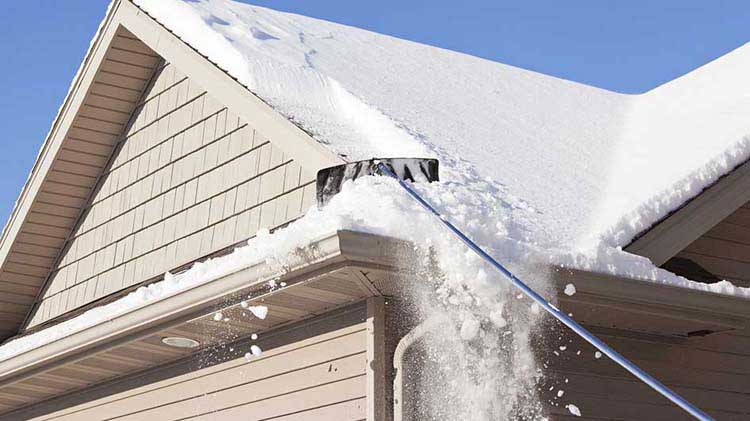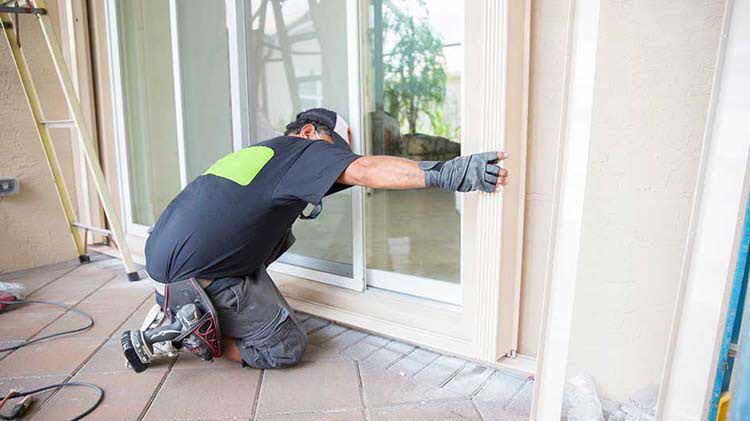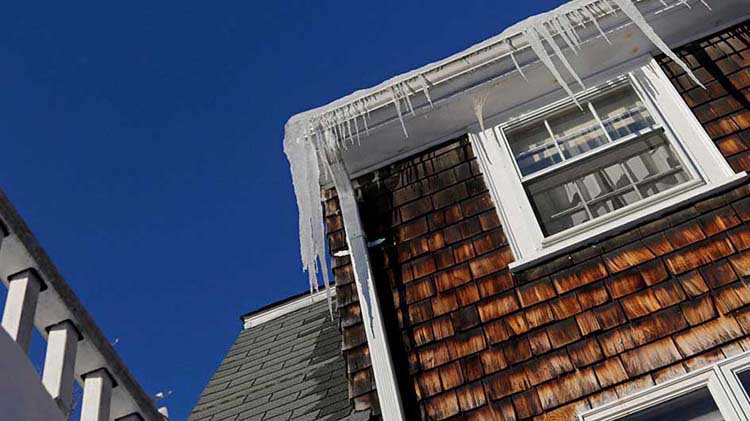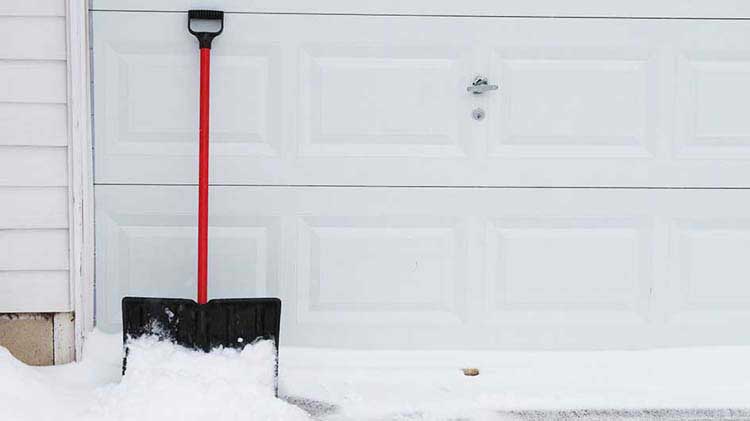How to remove snow from the roof
Snow on the roof may look pretty, but too much can potentially cause structural damage.
Heavy snow on a roof can cause multiple issues and can lead to costly damage. Usually the weight of ordinary new snow is 3.59 pounds per cubic foot. Wet snow, however, is much heavier and poses a greater risk for roof damage. A few factors that go into snow-induced structural failures include:
- A roof's shape
- A roof's slope
- A roof's construction
- History of maintenance
- The roof's exposure to wind
- Type of snow that has accumulated
Signs of roof pressure
Recognizing the signs of roof pressure and the risk of damage is important. New snow and old snow combined can easily exceed load capacity. Melting snow many times refreezes. As it melts, excess snow can also create ice dam damage and may ruin your home's interior under the eave line. While most roofs are built to withstand more than that, your roof may be under too much pressure if you see these signs:
- Visible sagging along the roofline
- Cracks in the ceiling or on the walls
- Popping or creaking noises
- Difficult-to-open doors and windows
Roof snow removal
Once you have recognized that snow pressure is a problem, you should safely remove as much of it as possible. Keep the following in mind:
- Hire a professional. A person who does this work regularly should know the best techniques and likely be insured.
- Never work alone. Always have someone with you in case you slip or have an emergency.
- Clear the area. The ladder up to your roof should be positioned on solid ground. Also, make sure the rungs are clear of ice and snow before you climb.
- Secure yourself. If possible, use a strap or belt to anchor yourself to something strong, like a chimney.
- Avoid shingle damage. Stay away from picks, hammers or other sharp tools to clear snow and ice.
Roof snow removal tools
There are various methods and tools to remove snow from your roof. Some of the typical tools used are rope, wire, an avalanche system or a shovel. The method will depend on how much snow there is on the roof, and what type of snow it is. If you have a one-story or flat-roofed house, invest in a snow rake. These long-handled tools with plastic blades can help you gently pull snow from the edge of the roofline.
Regular maintenance of your roof also help reduce the risk of damage from ice and snow. Many roofing contractors have the proper harnesses, tools and footwear to do most jobs safely.
If you have questions about your home insurance coverage, be sure to contact your State Farm® agent.




